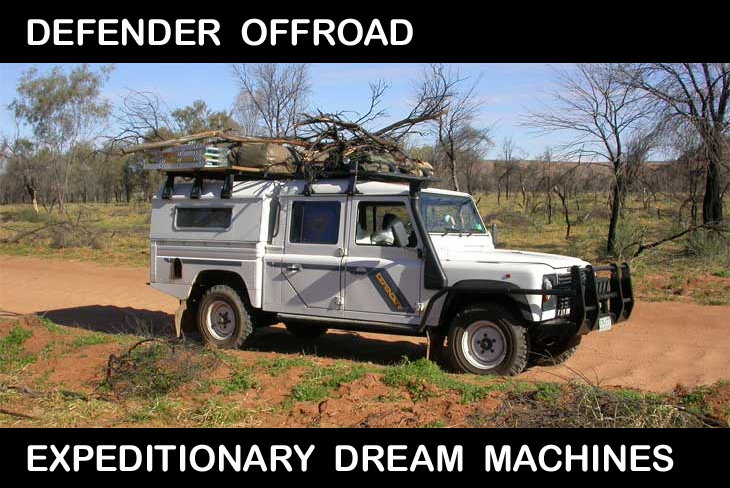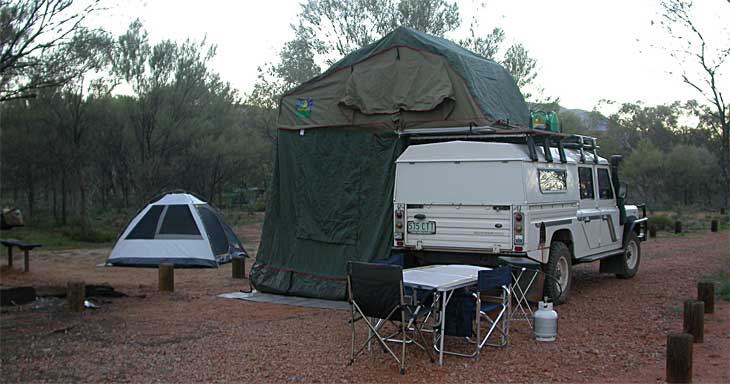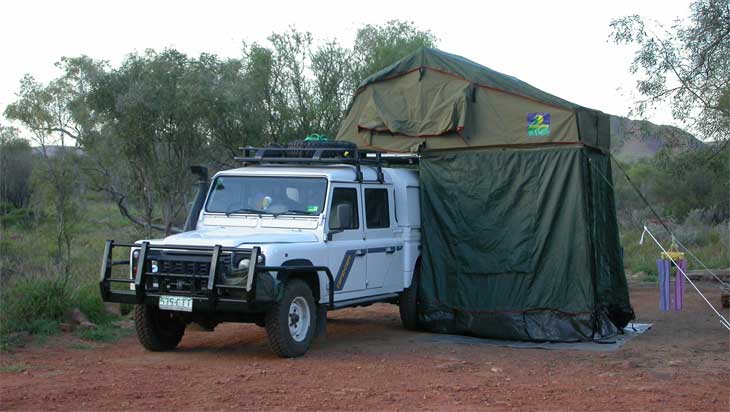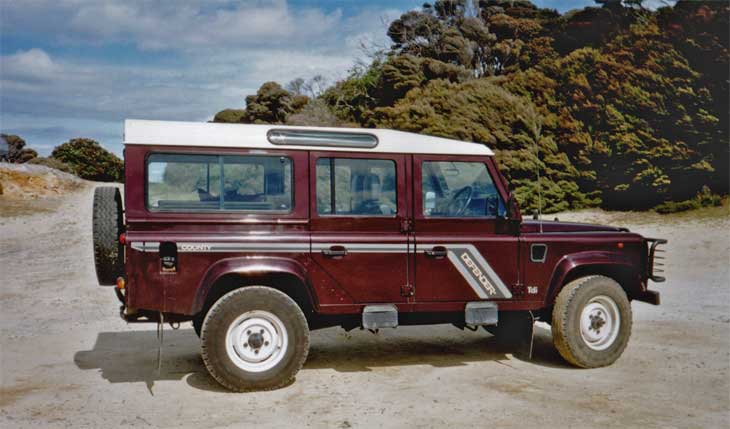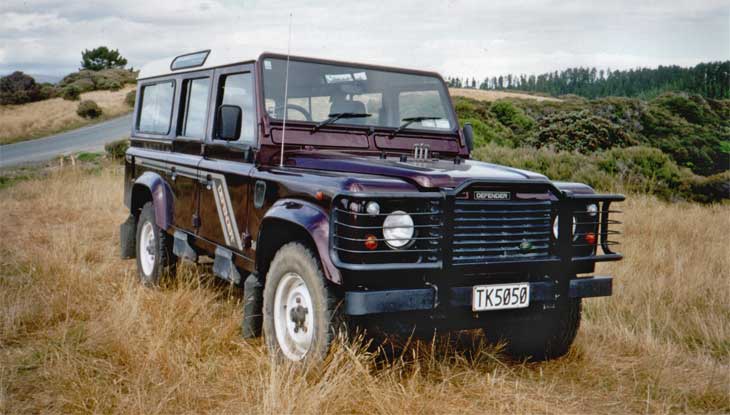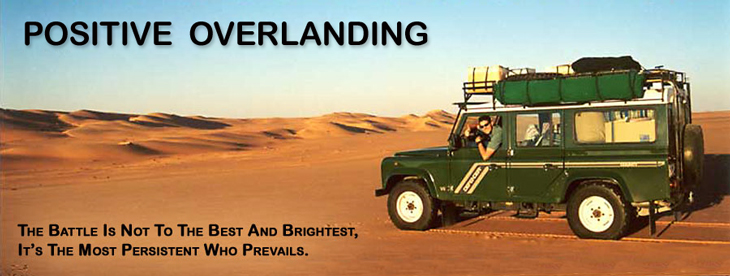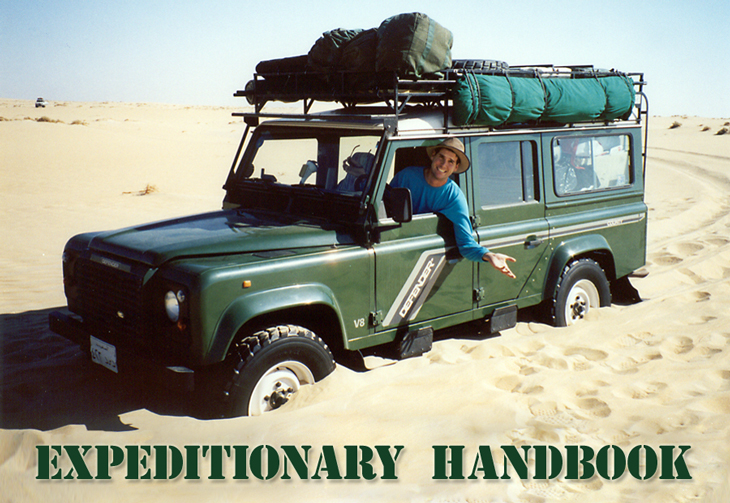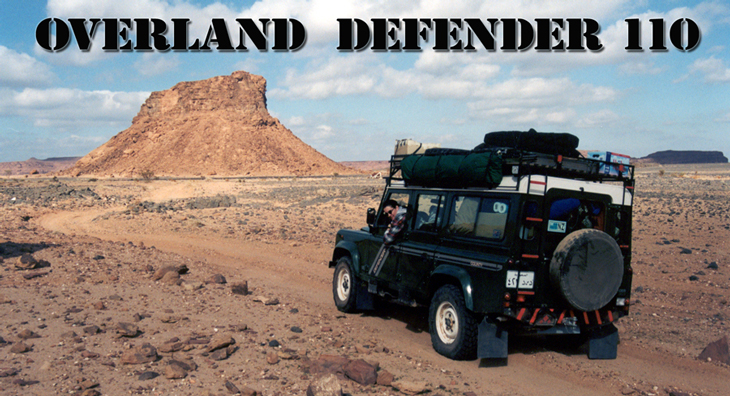|
|
|||||
|
|||||
|
Daydreams are easy. Just sit back and let them happen - effortless adventure. It's easy to be a legend in your own mind.
Real dreams are hard. You can't sit around making bun prints in the sands of time if you want to make your dreams come true. Real dreams aren't a trip to fantasy land. They are rock solid adventures purchased with blood, sweat, and tears, and the most precious commodity of all, time.
I have always been something of a dreamer. I have gone walkabout in my mind for thousands of hours, and that's ok, because I have spent even more time going walkabout on planet earth. I spent eleven years sailing around the world on my yacht, and ten years exploring the vast expanses of the Arabian desert and Australian outback in Land Rover Defenders. So I know a great deal about dreams and the dream machines that can make them come true.
What is the anatomy of a dream machine? What is it
that makes a dream machine into a dream machine? First and foremost, a
dream machine is honest. It's tough through and through. There is no
pretense; it's meant to take a licking and keep on ticking. I have
traveled in the desert with pretentious vehicles that looked tough, but
the moment you challenged them with arduous conditions, a demolition derby
begins. Cooling fans go through radiators with instant destruction of the
cooling system. Plastic fuel tanks crack and leak. Flimsy roof racks
disintegrate under heavy loads when driving on corrugations. Computerized
engines limp along when their computers fail. Car suspensions come to a
tragic end as springs break, shock absorbers leak or shear off. The list
of gear failures is as long as the list of equipment made to look tough
rather than actually being tough. In the expeditionary off-road
community, this type of equipment is called posing gear. It looks great
until you load it up and stress it out, and then it disintegrates. My
dream machine needs to be honest. I don't care what it looks like as long
as it's honest. It's tough and can stand up to the rigors of
expeditionary travel. What kind of load carrying capacity do I expect from an expeditionary vehicle? My minimum requirements are the vehicle should be able to carry at least a ten day supply of water, and sufficient fuel for 1200 miles off-road. It should be able to carry enough food and supplies to last for a minimum of ten days plus four people and all of their gear. That is a big ask, especially when you put four adults inside the truck. It's much easier when there are only two people on board.
My favorite expeditionary vehicle is a Land Rover Defender with a 110 inch or 130 inch wheelbase. Both are honest expeditionary machines, and with modest modifications, they can take you anywhere you want to go in the outback and beyond.
So what is it that makes a Defender qualify as an expeditionary vehicle?
1. It's tough.
2. You can outfit it with long range fuel tanks. The Defender has room for a replacement oversize main tank, an additional tank in the right rear wheel well, and two forward tanks running outside the chassis rails.
3. You can bolt on a Brownchurch galvanized roof rack along the full length of the roof. It's unmovable and indestructible, and it easily carries eight jerry cans of fuel, a roof top tent, and other essential gear.
4. Six Michelin XZL tires for rough terrain, especially in areas with thorn bushes and mulga stumps that have a predilection to destroy sidewalls.
5. Six Michelin XS sand tires if your expeditionary travel is exclusively in the sand dunes found in the Empty Quarter of Arabia, or the Namibian sands.
6. Piv Lock swing out spare tire carrier mounted on the back of the vehicle. This makes the spare tire easily accessible when needed, and at the same time keeps it out of the way when not needed.
7. A reinforced bonnet (hood) backed up with aluminum plates so you can carry a spare tire on the front of the car without breaking the bonnet.
8. A bull bar that offers protection from wayward Australian wildlife like kangaroos.
9. An eight thousand pound capacity winch mounted on the bulbar.
10. Twin heavy duty battery system. One battery for engine starting, and one for refrigeration, lights, radios, and other accessories.
11. Off-road running lights for those occasions when necessity demands you drive off-road at night.
12. High lift jack with jack mounts.
13. Upgraded rear air bag suspension.
14. Skid plate to protect the front differential and running gear further aft.
15. Windshield mounted hand held compass for gross navigation to tell you if your are on the right track heading in approximately the correct direction.
16. A GPS to tell you exactly where you are. (Global Positioning System)
17. Geologic survey maps of at least 1:500,000 scale for the region of the world in which you are driving.
18. Roof top tents, side mounted tents, and free standing tents all work well. Roof top tens give additional security from unwanted critters like snakes, scorpions, dingoes, sand cats, and other undesirables.
19. Sand Ladders for vehicle recovery when stuck in soft sand.
20. Eutectic plate refrigeration similar to the Australian Autofridge brand.
21. Built in sliding drawers in back of the vehicle. The drawers can be locked for secure storage of valuable items.
22. One hundred feet of one inch double braid nylon for bunge jumping a stranded vehicle out of sand and mud.
23. Snatch strap for towing a vehicle. Tree protector strap for winching a vehicle.
24. Sand anchor for winching a vehicle when no other attachment point is possible.
25. Shovel, pick, small sledge hammer, full set of tools.
26. Inventory of spare parts to include left rear half shaft, hub drives, starter motor, alternator, belts, hoses, differential oil, gear box oil, engine oil, coolant, grease.
27. Snorkel to protect the engine from dust in the desert, and to prevent water from entering the engine when fording streams.
28. Eight high quality jerry cans that can be positively locked to prevent accidental spillage and leakage.
29. Camping gear.
30. Long range water tanks.
I have owned five Defenders and have driven more than 100,000 kilometers in the deserts of Arabia and Australia. As an expeditionary vehicle, the Defender does the job admirably - better than most pretenders. It's built for expeditionary travel and can withstand the rigors of carrying heavy loads in severe conditions.
At present, I have two Defenders waiting in the wings. One is in New Zealand, and the other in Australia ready for the next adventure. They are both diesels with 300 Tdi engines. Since they have identical engines, their spare parts are interchangeable, and you only need to carry one set of spares for both vehicles.
The burgundy Defender has a 110 inch wheelbase, and is fully customized for long range adventure. The white Defender has a 130 inch wheelbase with a crew cab and enclosed truck bed.
These are the dream machines that just might take me on a driving trip around the world. How does this sound? After trekking though the Australian outback, I ship the Defenders from Perth to Capetown. Drive from South Africa to Cairo and up into Jordan and Israel. Ship the trucks to Greece and then drive overland to London. Ship the Rovers to Buenos Aires, Argentina, drive over the Andes into Chile, and then drive up the Pan American highway all the way to Alaska. Finally, ship the Defenders to Auckland, and tour New Zealand, and the around the world tour will be done. Sounds like a great adventure to me. Just the thought of it gets me excited. I can hardly wait to get started.
Now, where is the phone number for my travel agent.
"Hello, Can you get me a Carnet de Passage for two vehicles traveling
through thirty-five countries for the next year and a half?" |
|||||
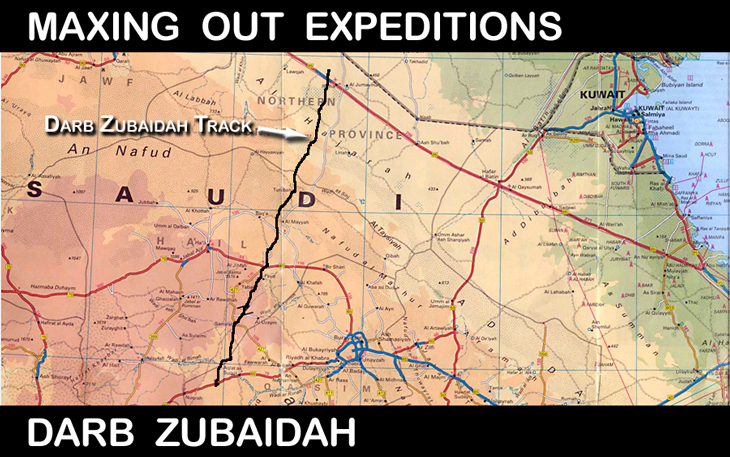 Travel in a Land Rover Defender 110 on the Darb Zubaidah from Iraq to Medina in the Kingdom of Saudi Arabia. Experience what it's like to follow the pilgrim route that took millions of people to the holy city of Mecca. Visit Maxing Out Expeditions.com 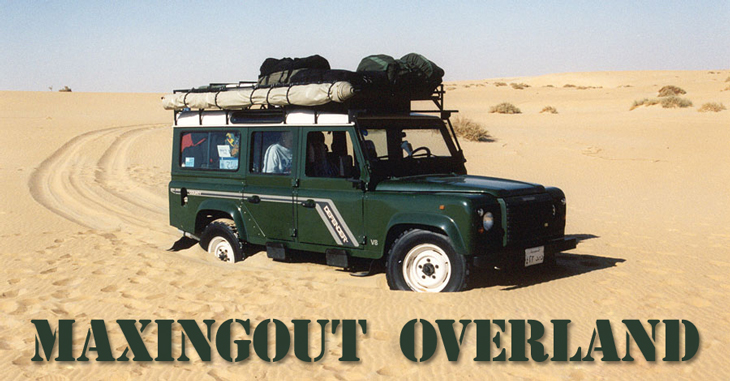 The mysterious tombs of Bir Zeen beckon adventurers into the deserts of southern Arabia. Who constructed these tombs, and why did they put them on the top of mountains? Who is buried there? Visit Maxing Out Overland.com 
More than 400 years ago a massive meteor struck and
buried itself in the sand dunes of the Empty Quarter of Saudi Arabia.
Read about our expedition to the Wabar Meteor Crater. Visit
Maxing Out
Offroad.com |
